"Stick to the pick!" Kirk Fletcher's blues masterclass
A classic lesson in contemporary blues guitar from Kirk Fletcher himself: includes video, tab and audio
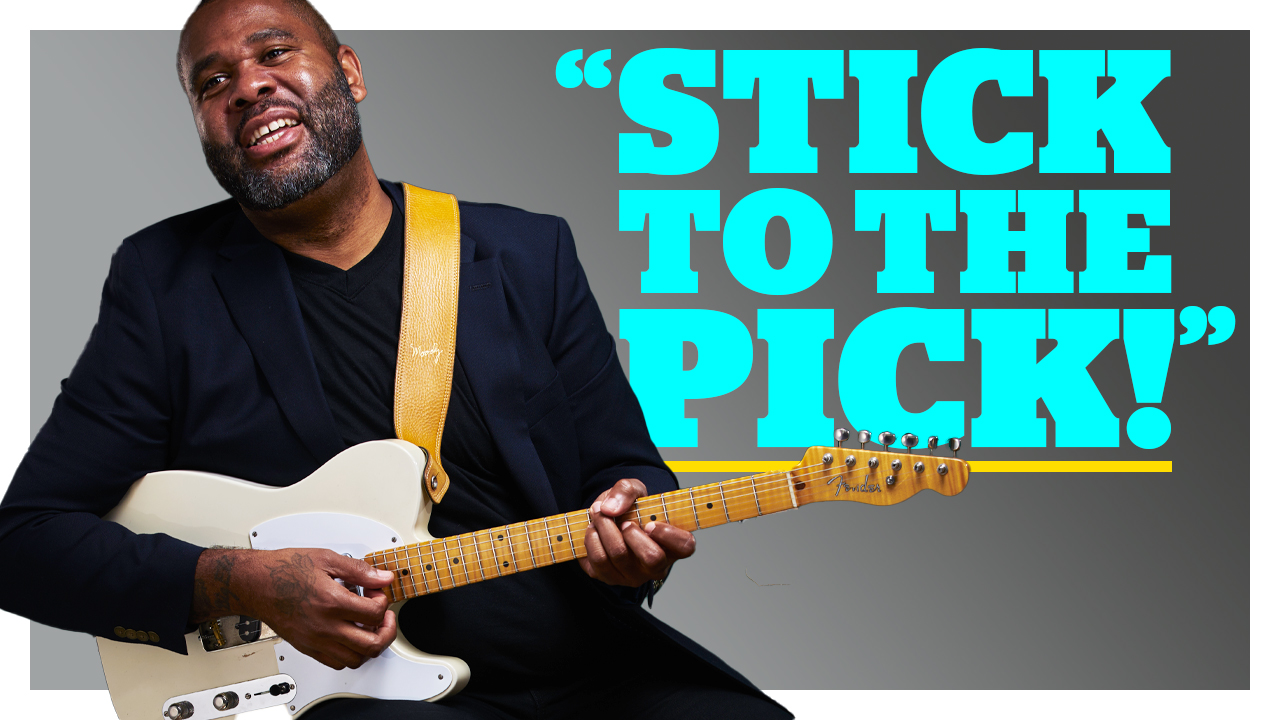
“I started playing guitar when I was about eight years old in my dad’s church," says Kirk Fletcher. "I just picked it up from my brother. One minute I couldn’t play and I just loved it, and the next minute I could kinda play a little something – bend a note or play a little Jimmy Reed thing or some simple church song, something like that.
"I just kept going on from there – five or six hours would go by after school and I’m still playing. I’d wake up in the morning, look at my guitar first thing, it would be propped up against the chair… And my whole life has been pretty much that.”
Kirk Fletcher has come a long way since then. An absolute master of blues, soul, gospel and funk guitar, Kirk Fletcher has gone from fronting his own band to playing rhythm guitar for Joe Bonamassa (and then just about everything else in between). In 2018, we sat down with him for this masterclass (which has become one of our most popular videos on YouTube), in which he showed us some of the techniques – and a few of the licks – that make up his guitar style.
Drawing from a range of influences, Kirk’s playing relies on a big, semi-clean guitar sound. As you can determine from the video, he goes to great lengths to keep his sound full, fat and creamy.
"When I was younger," he says, "I actually played a lot more with my fingers. But now I don't play much with my fingers – I just kind of stick with the pick most of the time. Every once in a while, maybe I'll hybrid a little bit – but not really much. I've just figured out how to try and get the warmest tone from my pick. You know, I like the slur and to be able to have dynamics and play harder or softer or further up the neck or back by the bridge…"
Check out his use of pedals at the start of the video, watch and learn from his playing, and use the tab and audio examples below to help you learn from a master…
Example 1
In this first example Kirk demonstrates how he learned to produce an even response while moving between a pick or his fingers to strike the strings. Being confident that you can produce a similar range of dynamics from either method, so that any transfer mid-solo is tonally seamless, is a difficult trick to pull off and requires a lot of dedicated practice.
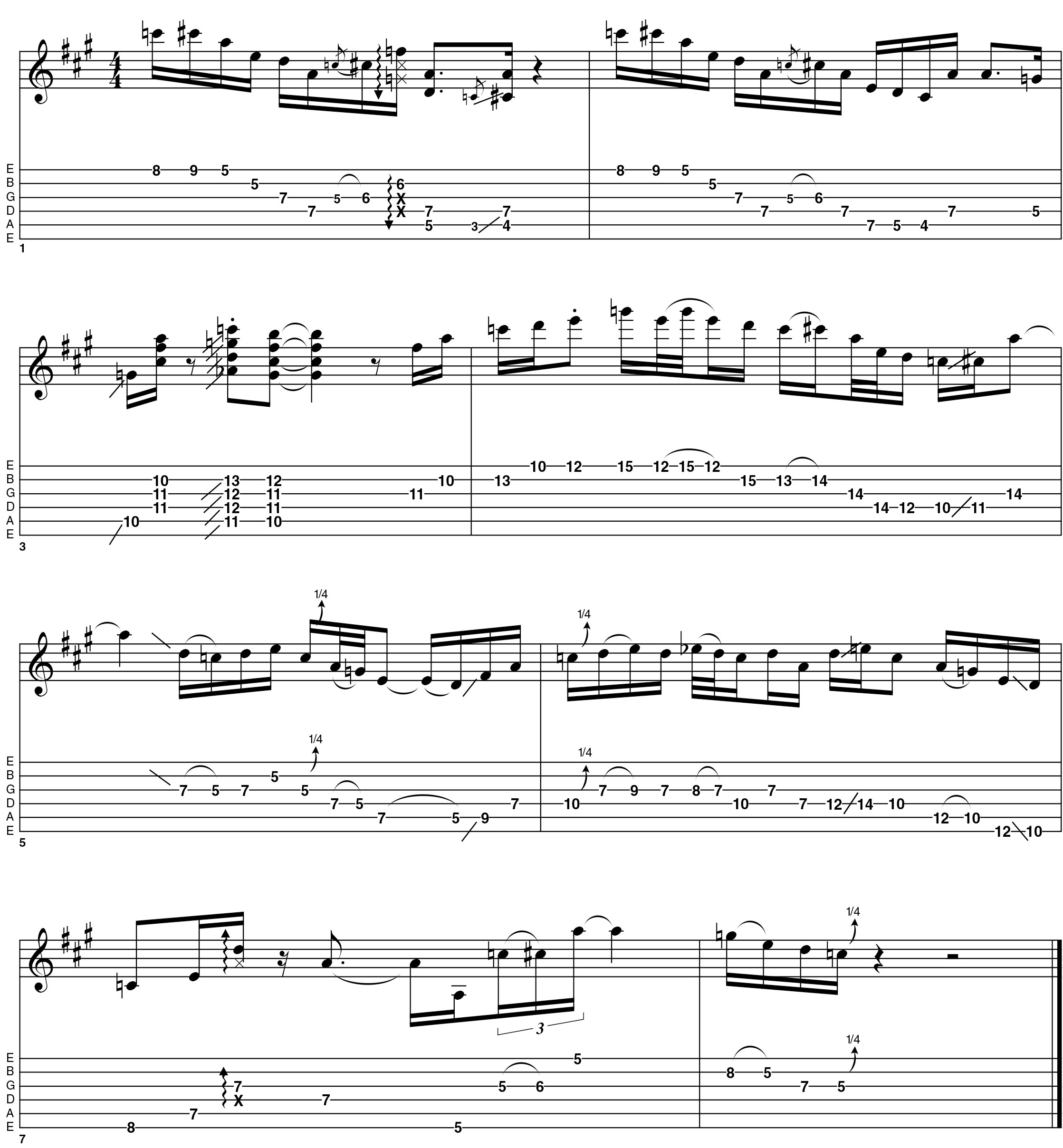
Example 2
A laid-back funk style is another facet of Kirk’s playing. The important thing is to master a controlled muting technique - watch the video and you’ll see that while Kirk is keeping his right-hand position focused but quite loose, his left hand is lifting very slightly between chords to produce a staccato effect, plus some rhythmic, fully muted stabs. Funky!
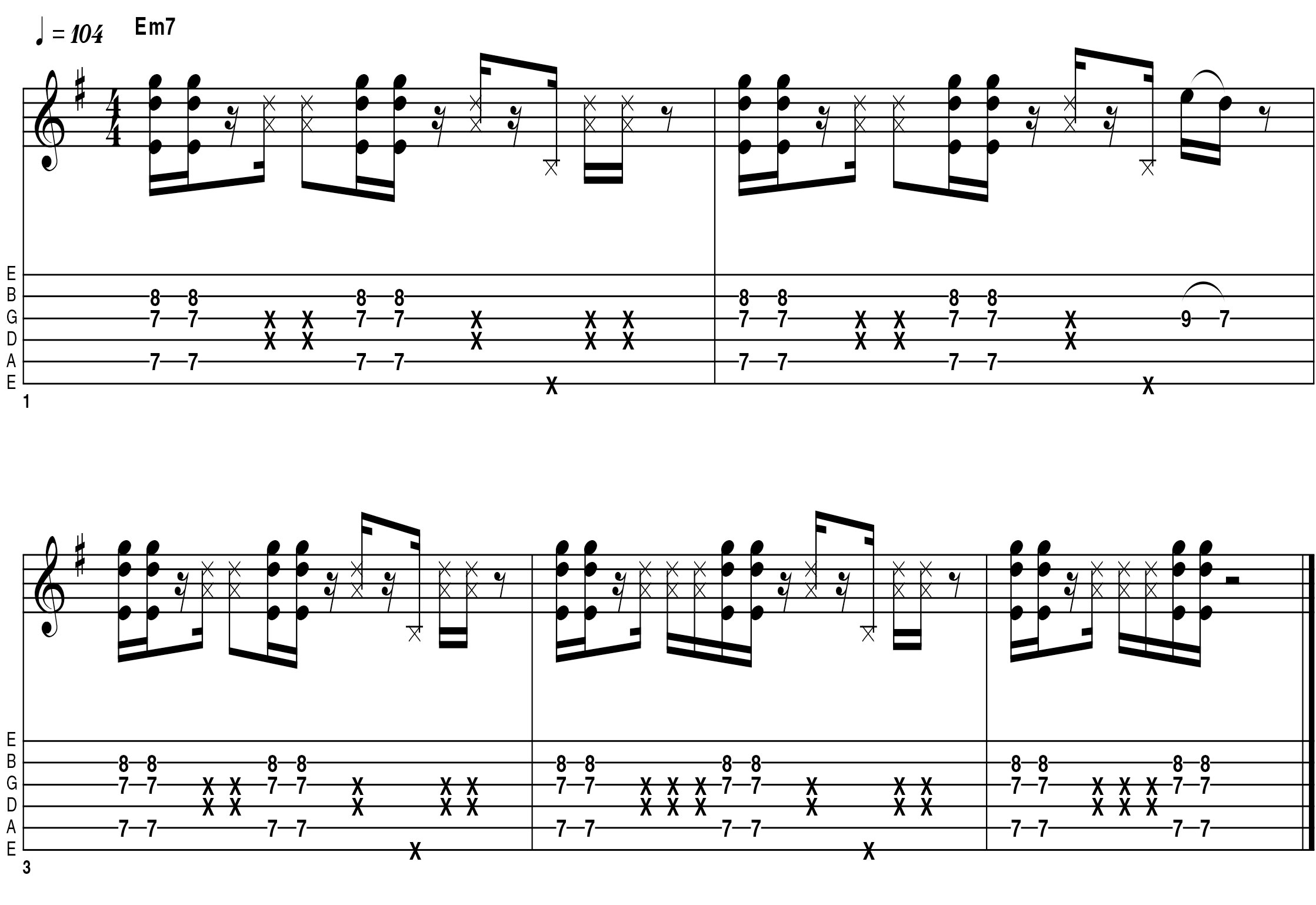
Example 3
Ramping the funk up a notch or two, Kirk demonstrates the type of rhythm style associated with players such as Nile Rodgers, which calls for more fretting activity in the left hand. It’s worth approaching this type of exercise in a low gear to begin with, and once you have both hands working in sync, start increasing the speed. A metronome will help keep your timing on track, too.

Example 4
Another good example of how the right hand can affect your tone, here Kirk demonstrates how changing the dynamics and positioning of the picking hand can make a huge difference. The first half of this example is played near the bridge, producing a hard, trebly sound; the second is near the neck for a much warmer response.
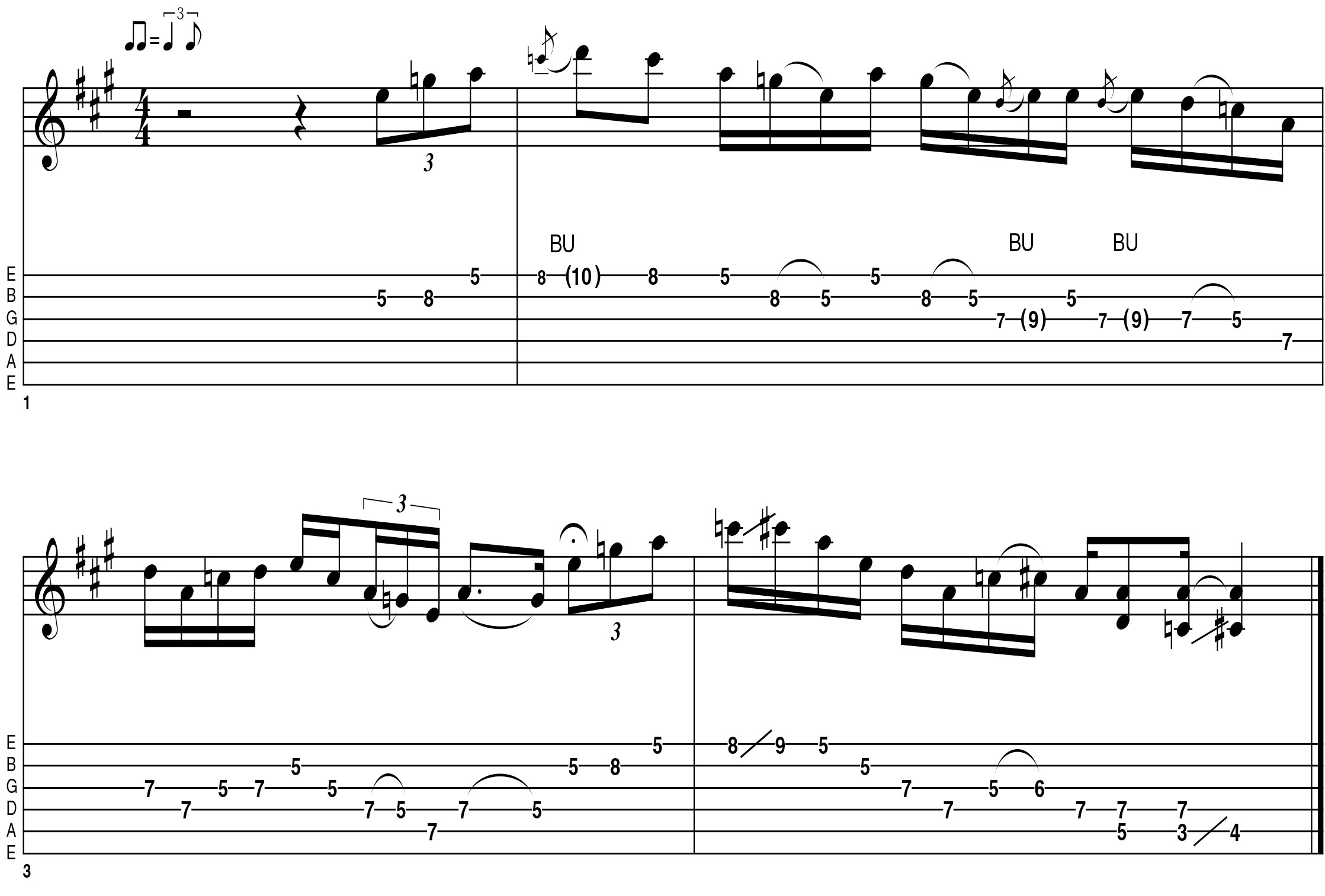
Example 5
On the subject of mapping the fretboard, Kirk demonstrates how playing the same lick in different positions can be a good way to find your way across the ’board, thus turning that frightening brown stick into an organised musical workspace!

Example 6
Taking Example 5 as a starting point, this example demonstrates the outcome of being fluent across the full range of the fretboard, instead of being locked into individual pentatonic shapes. In addition to that, there are some great bluesy licks to add to your repertoire here…
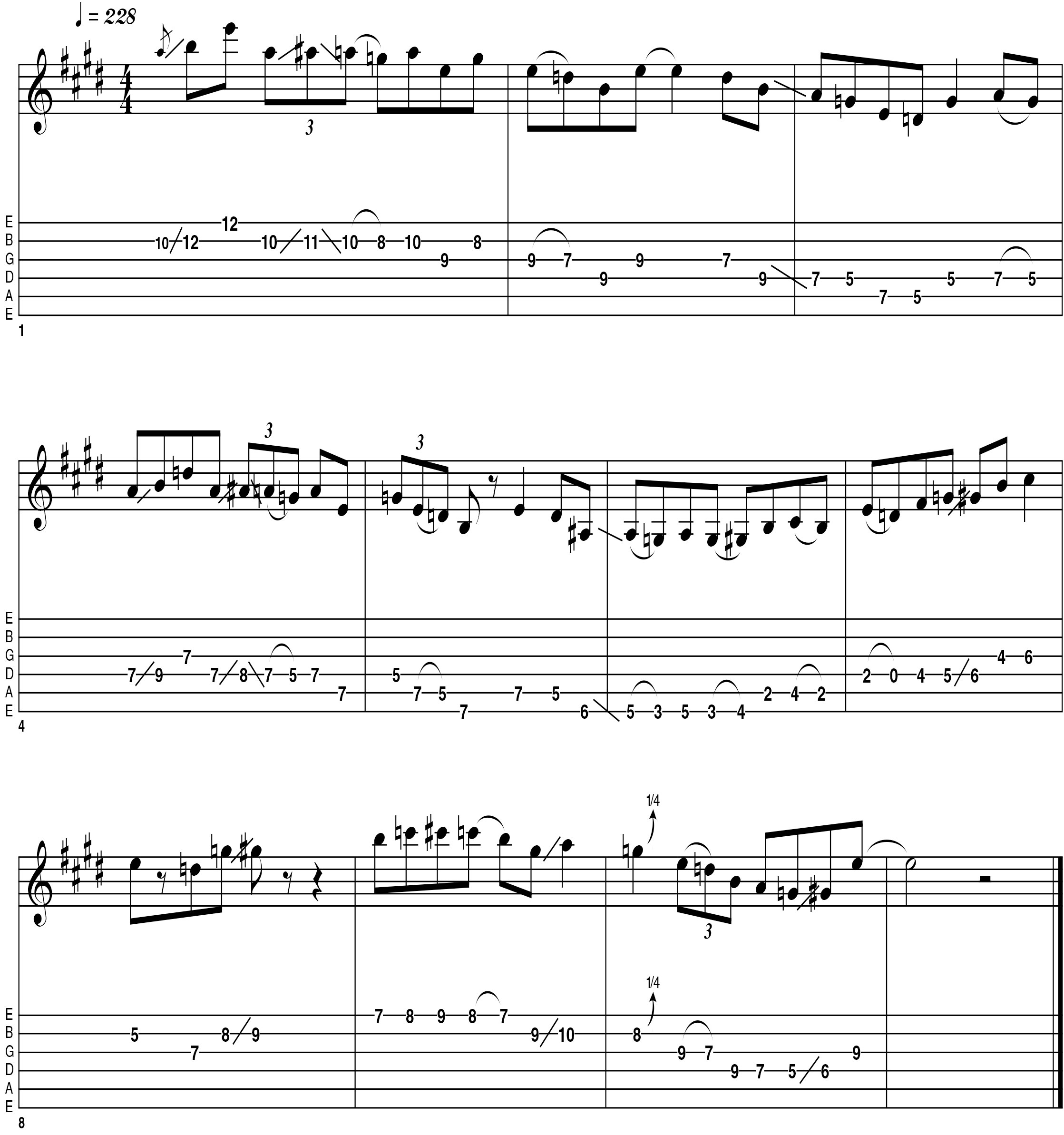
Example 7
Inspired by the playing of BB King and Chris Cain, this is a great example of the old ‘less is more’ principle. Kirk takes a simple lick and produces a series of variations on it to the point where it sounds like a complete solo. Economic and effortlessly tasteful at the same time, it’s sometimes worth making a simple idea go just that little bit further.
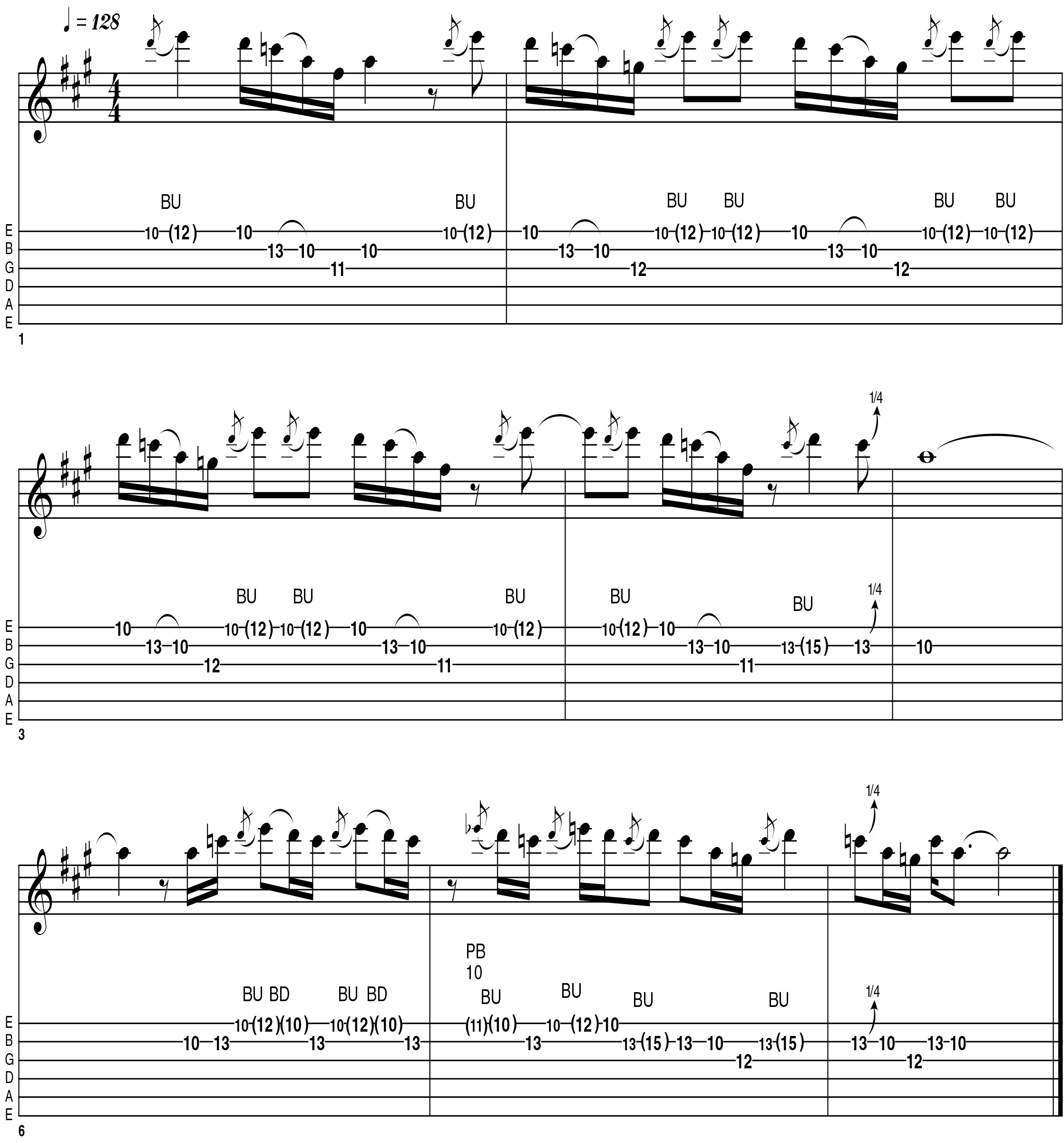
Example 8
Another lick that Kirk uses a lot in his playing, this idea goes back to the basics and occupies one of the most popular locations on the fretboard - the A minor pentatonic at the 5th fret. It’s not difficult or complex, but the type of smooth fluency needed to pull it off takes work.

Example 9
And now for something completely different… We’ve travelled away from soloing techniques in order to explore accompaniment - something that the average guitarist finds him- or herself doing for most of the time on stage. Here, it’s old-style ‘jump blues’ with its very characteristic staccato chordal stabs and athletic single- and dual-note runs. It’s tricky to master, but just listen to the result!
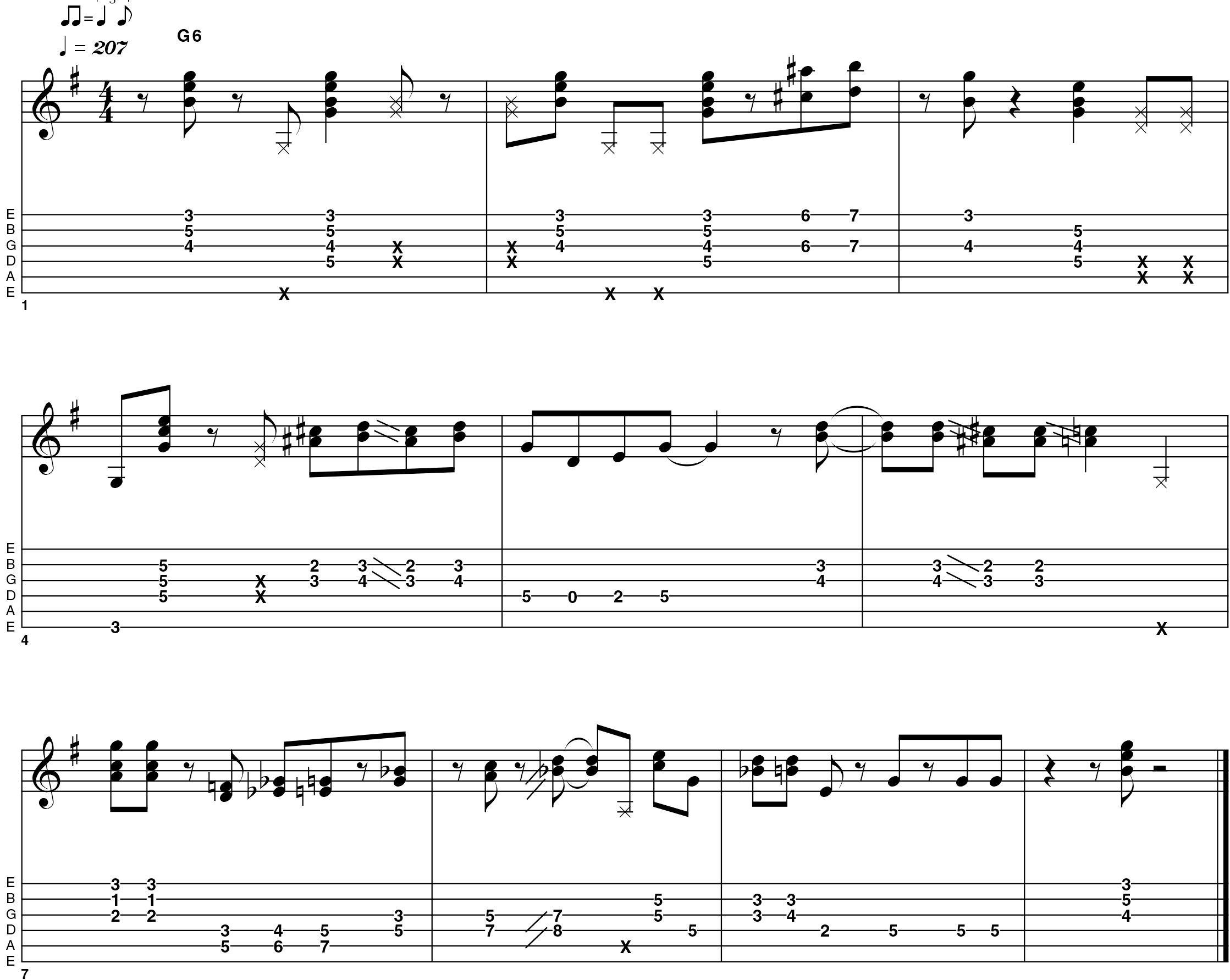
Originally published in Guitarist magazine, September 2018.
Get The Pick Newsletter
All the latest guitar news, interviews, lessons, reviews, deals and more, direct to your inbox!










![Joe Bonamassa [left] wears a deep blue suit and polka-dotted shirt and plays his green refin Strat; the late Irish blues legend Rory Gallagher [right] screams and inflicts some punishment on his heavily worn number one Stratocaster.](https://cdn.mos.cms.futurecdn.net/cw28h7UBcTVfTLs7p7eiLe.jpg)
